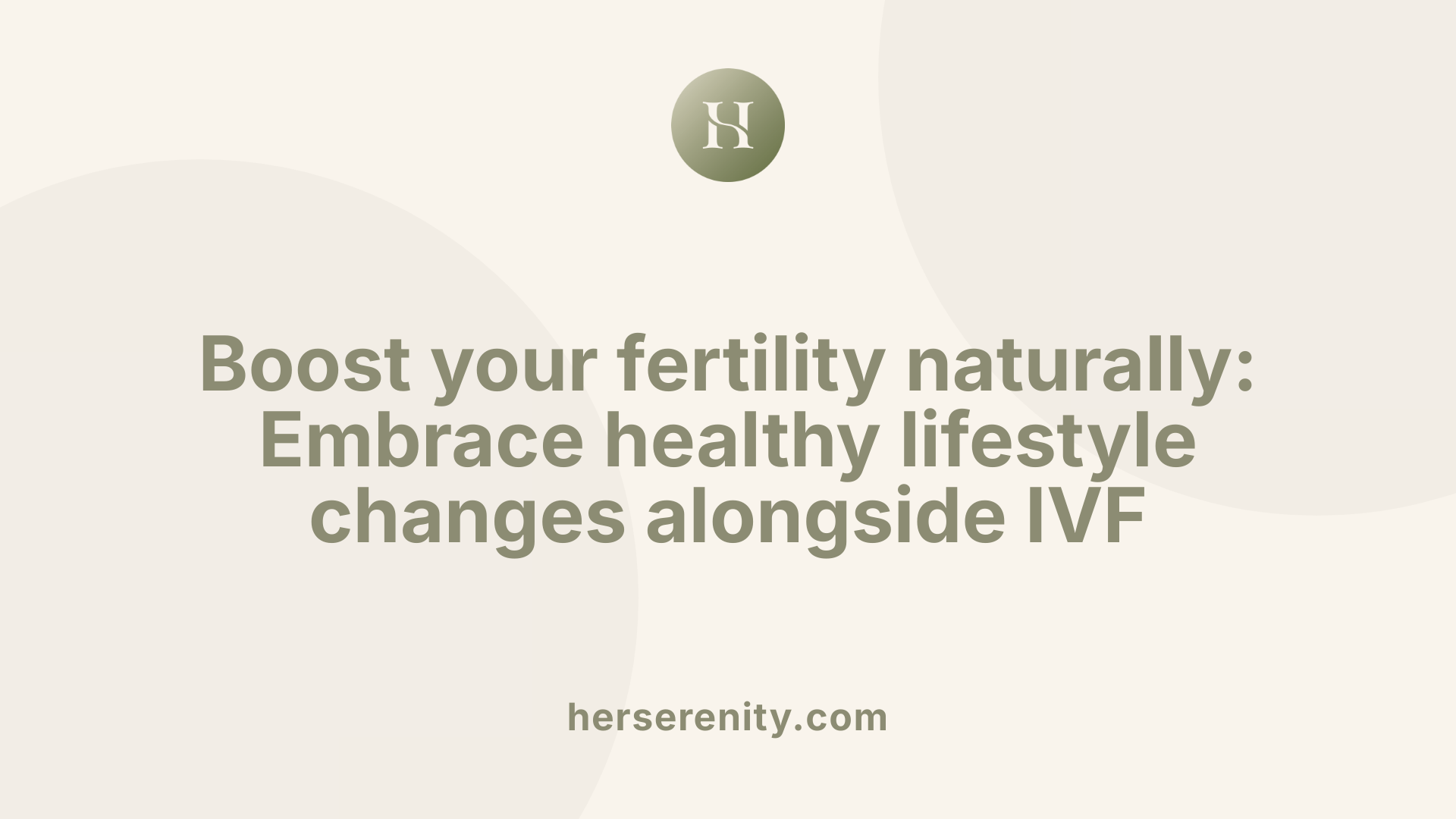Embryo grading and what it means for your IVF success
Unlocking IVF Potential: The Critical Role of Embryo Grading

Understanding the Science Behind Embryo Selection
In vitro fertilization (IVF) has transformed the landscape of reproductive medicine, offering hope to millions of individuals and couples facing fertility challenges. Among the many factors contributing to IVF success, embryo grading stands out as a crucial tool for identifying embryos with the highest potential for implantation and live birth. This article unpacks what embryo grading entails, how it influences IVF outcomes, and its relationship with other key factors such as genetic testing and embryonic environment. Additionally, we'll explore how clinical practices during embryo transfer further impact success rates, providing a comprehensive view of what prospective patients can expect.
What Is Embryo Grading and Why Does It Matter?
Definition and Timing of Embryo Grading
Embryo grading is a critical assessment tool used during the in vitro fertilization (IVF) process to evaluate the quality of embryos. This evaluation typically takes place on Day 3 and Day 5 after fertilization. The goal is to identify embryos with the best potential for implantation and successful pregnancy, guiding decisions for embryo transfer or cryopreservation.
The Gardner Embryo Grading System
One of the most recognized embryo grading methods is the Gardner embryo grading system, developed by Dr. David Gardner. This system provides a standardized approach to classifying embryos based on key morphological features to assist embryologists in selecting the most viable embryos.
Parameters Assessed: Expansion, Inner Cell Mass, Trophectoderm
The Gardner system assesses three main parameters:
- Degree of Expansion: Reflects how much the embryo has expanded within its outer shell, indicating developmental progress.
- Inner Cell Mass (ICM): Represents the group of cells that will develop into the fetus. The quality of ICM is graded, typically from A to C.
- Trophectoderm (TE): Consists of cells that will form the placenta and supporting tissues. Its symmetry and quality are also graded.
Each parameter provides critical information about the embryo's viability and implantation potential.
Relationship Between Embryo Morphology and Potential Success
Embryo morphology, as graded through these parameters, helps predict the likelihood of successful implantation and pregnancy. Generally, embryos with higher grades—especially those with ICM and TE grades of A or B—show higher implantation rates and better clinical outcomes. However, embryo grade is just one aspect of success, as genetic health and the uterine environment also play roles.
What Role Does Embryo Grading Play in Assessing IVF Success?
Embryo grading plays a vital role by enabling clinicians to select embryos with the highest implantation potential. This improves the chances of pregnancy while helping to minimize the transfer of lower-quality embryos. Although higher-grade embryos tend to lead to better outcomes, it's important to combine embryo grading with genetic testing and other clinical factors for comprehensive IVF success prediction.
How Embryo Morphology Relates to IVF Success Rates
Do higher embryo grades increase chances of pregnancy?
Research indicates a clear correlation between embryo grading and IVF outcomes. Embryos graded with higher quality scores, particularly those where the inner cell mass (ICM) and trophectoderm (TE) receive A or B grades, are linked to greater clinical pregnancy and live birth rates. Yet, embryos with lower grades still hold the potential for successful implantation and live births, underscoring grading as a helpful but not definitive predictor.
Impact of ICM and TE grades
The ICM, which develops into the fetus, and the TE, which forms the placenta, are critical morphological features evaluated during embryo grading. Studies show that the morphology of these components is a stronger indicator of IVF success than other parameters like blastocyst expansion or size. Therefore, embryos with well-formed, symmetrical ICM and robust TE (grades A or B) are favored as they tend to result in improved implantation and pregnancy outcomes.
Limitations of blastocyst expansion and size metrics
Evidence suggests that the degree of blastocyst expansion or its size does not significantly influence pregnancy or live birth rates. This insight shifts the focus more directly onto cellular quality (ICM and TE) rather than morphological dimensions, indicating that embryo morphology assessments should prioritize cellular features over blastocyst size.
Importance of soft embryo transfer catheters and catheter positioning
Success in embryo implantation also heavily relies on the embryo transfer procedure itself. The use of soft embryo transfer catheters is strongly recommended, as robust evidence demonstrates their advantage in increasing pregnancy rates compared to firm catheters. Precise placement of the embryo transfer tip is crucial; positioning it in the upper or central uterine cavity, more than 1 cm from the fundus, optimizes outcomes based on available data. These procedural factors complement embryo quality assessments to maximize IVF success.
| Aspect | Detail | Impact on IVF Success |
|---|---|---|
| Embryo grade (ICM & TE) | Higher grades (A, B) represent better cellular quality | Associated with higher clinical pregnancy and live birth rates |
| Blastocyst expansion and size | Less predictive of success compared to cellular morphology | Minimal impact on pregnancy or live birth rates |
| Embryo transfer catheter type | Soft catheters preferred over firm ones | Improvement in pregnancy rates |
| Embryo transfer tip positioning | Placement >1 cm from uterine fundus in upper central cavity | Enhanced pregnancy outcomes |
The Role of Genetic Testing in Conjunction with Embryo Grading
What is Preimplantation Genetic Testing (PGT-A)?
Preimplantation genetic testing for aneuploidy (PGT-A) is a technique used in IVF to analyze embryos for chromosomal normalcy prior to transfer. It classifies embryos as euploid (chromosomally normal), aneuploid (abnormal), or mosaic. This genetic evaluation goes beyond traditional embryo morphology assessment.
How Does PGT-A Complement Morphological Grading?
Morphological grading evaluates embryos based on visual criteria like the inner cell mass and trophectoderm quality. However, morphology alone cannot reveal chromosomal abnormalities. PGT-A adds a crucial genetic layer of insight, refining embryo selection by combining morphology with chromosomal status. This dual approach helps identify embryos with the highest implantation potential.
What is the Impact of PGT-A on Live Birth Rates Across Age Groups?
Data show that embryos tested by PGT-A significantly improve live birth rates compared to untested embryos. For example, women over 42 see a live birth rate of 58.8% per embryo transfer with PGT-A tested embryos, vastly outperforming the 5.1% success rate with unscreened embryos. Across all age groups, PGT-A contributes to higher pregnancy success and live births when paired with careful morphological grading.
What are the Limitations of Morphology-Only Assessment?
While morphological grades provide valuable information on embryo quality, they do not guarantee genetic normalcy. Some embryos with good morphology may carry chromosomal abnormalities, leading to implantation failure or miscarriage. Therefore, morphology assessment alone is insufficient, highlighting the importance of incorporating genetic testing like PGT-A.
Overall, using PGT-A alongside traditional embryo grading enhances IVF outcomes by combining visual and genetic assessments. This synergistic practice optimizes embryo selection, especially benefiting older women and improving the chances of healthy live births.
Age and Its Overarching Influence on Embryo and IVF Success
How Does Age Influence IVF Success?
Age at the time of egg retrieval stands as a crucial factor impacting IVF success. Fertility naturally declines with advancing maternal age, leading to noticeably lower live birth rates after age 40. This decline is influenced by both embryo quality and uterine environment changes as women age.
What Are the Success Rate Statistics by Age Group?
For women under 35, the live birth rate per new patient is impressively high, with the RMA of New York reporting a rate of 76.6% in 2021, exceeding the national average of 68.5%. As age increases, success rates decrease, yet this center maintains outcomes consistently above national averages across all age groups. For instance, the live birth rate per intended egg retrieval in women under 35 was 63.7%. Older age groups see a drop, reflecting the natural impact of aging on fertility.
How Does PGT-A Improve Outcomes for Older Patients?
Preimplantation genetic testing for aneuploidy (PGT-A) offers significant benefit for older women undergoing IVF. For patients over 42, use of embryos screened with PGT-A resulted in a live birth rate per embryo transfer of 58.8%, a marked improvement compared to just 5.1% with unscreened embryos. PGT-A helps by identifying chromosomally normal (euploid) embryos, enhancing the chance of implantation and live birth despite age-related embryo quality decline.
Why Is Age a Critical Predictor of IVF Outcome?
Age impacts both embryo quality and implantation environment, making it the single most significant predictor of IVF success. The 'Three E’s' approach — evaluating Endometrium, Embryo, and Embryo Transfer process — highlights that embryo quality declines as age advances, underscoring the importance of timely treatment. While success dips notably after age 40-41 using a patient’s own eggs, strategies like PGT-A and optimized embryo transfer protocols can help improve outcomes.
| Age Group | Live Birth Rate per New Patient (RMA, 2021) | Impact of PGT-A Screening |
|---|---|---|
| Under 35 | 76.6% (above national avg. 68.5%) | N/A |
| Over 42 | Declines without PGT-A | 58.8% live birth rate with PGT-A |
| All Ages | Higher than national averages at RMA | Significant improvement with PGT-A |
This data clearly underlines how age shapes IVF success, guiding clinical decisions and patient expectations accordingly.
The ‘Three E’s’: Endometrium, Embryo, and Embryo Transfer Process

What are the key factors influencing IVF success collectively?
The 'Three E’s' approach offers a comprehensive framework to evaluate IVF success by focusing on three crucial elements: the Endometrium, the Embryo, and the Embryo transfer process. Each of these factors plays a vital role in achieving pregnancy and live birth.
Overview of the Three E’s approach
This method underscores that successful implantation depends on the combined quality and interaction of the fertilized embryo, the receptiveness of the uterine lining (endometrium), and the skill and technique used during embryo transfer. Addressing all three ensures the best chance for pregnancy.
How each factor influences IVF success
- Endometrium: A healthy uterine lining is essential for embryo implantation. Factors affecting its thickness and receptivity can significantly impact outcomes.
- Embryo: Embryo grading evaluates morphology traits like cell quality and symmetry. Higher-grade embryos (especially those with better inner cell mass and trophectoderm quality) are linked to higher implantation and live birth rates.
- Embryo Transfer Process: Precise embryo transfer techniques, including the use of soft catheters, ultrasound guidance, and positioning the embryo appropriately in the uterine cavity, strongly affect pregnancy rates.
Connection between embryo quality and uterine receptivity
Successful IVF requires not only viable, well-graded embryos but also an endometrium capable of supporting implantation. Even embryos of the highest quality cannot achieve pregnancy if the uterine environment is suboptimal.
Importance of the embryo transfer technique
The transfer procedure contributes significantly to the success of IVF. Proper training of clinicians and adherence to best practices—like removal of cervical mucus, catheter selection, and avoiding post-transfer bed rest—are critical to maximize implantation potential and live birth rates.
By focusing on these three interconnected elements, the 'Three E’s' approach helps clinicians optimize IVF strategies and improve patient outcomes.
Best Practices During Embryo Transfer to Maximize Success

How does the embryo transfer procedure affect IVF outcomes?
Embryo transfer is a critical step in in vitro fertilization (IVF), and its success heavily depends on several procedural factors. One primary influence is the clinician’s skill, which varies among practitioners and can significantly affect pregnancy rates. Standardizing training and following evidence-based protocols helps reduce variability and improve outcomes.
Routine use of abdominal ultrasound guidance during embryo transfer is strongly recommended. This practice is supported by good evidence from multiple randomized controlled trials showing improved pregnancy and live birth rates. Ultrasound helps place the embryo accurately in the uterus, enhancing the chances of implantation.
Another important factor is the choice of catheter. Soft embryo transfer catheters are preferred over firm catheters, as good evidence indicates they increase pregnancy rates. These catheters cause less trauma to the uterine lining, creating a more favorable environment for embryo implantation.
Correct positioning of the embryo transfer tip within the uterine cavity is essential. Placing the tip in the upper or middle (central) area of the uterus, more than 1 cm from the fundus, is recommended based on fair evidence. This location optimizes the embryo’s chances of successful implantation.
Additionally, the use of sterile, latex-free gloves during the procedure is advised. Fair evidence shows that this practice does not negatively impact pregnancy rates and helps maintain a sterile environment to minimize any risk of infection or allergic reactions.
In summary, clinician expertise combined with the use of ultrasound guidance, soft catheters, precise embryo positioning, and sterile equipment forms the cornerstone of best practices during embryo transfer to maximize IVF success.
Procedural Techniques: Cervical Mucus Removal and Immediate Catheter Withdrawal
Are cervical mucus removal and catheter withdrawal timing important during transfer?
Removing cervical mucus before embryo transfer is supported by fair evidence suggesting it improves pregnancy and live birth rates. This simple procedural step can help optimize the environment within the cervical canal, potentially facilitating a smoother embryo passage into the uterus and enhancing implantation chances.
Regarding the timing of catheter withdrawal, immediate removal of the embryo transfer catheter right after embryo expulsion is highly recommended. Studies based on fair evidence show that delaying catheter withdrawal offers no added benefit to pregnancy outcomes. Immediate withdrawal also reduces potential trauma or irritation to the cervix and uterine lining, supporting a better environment for embryo implantation.
Effects on pregnancy and live birth rates
Both cervical mucus removal and immediate catheter withdrawal positively influence IVF success rates. Removing cervical mucus has been linked with higher pregnancy and live birth rates, emphasizing its practical relevance. Similarly, timely catheter withdrawal avoids unnecessary procedures or disruptions, maintaining the conditions favorable for embryo survival.
Together, these procedural techniques contribute meaningfully to improving IVF outcomes by minimizing potential barriers or disturbances during embryo transfer. While not the sole factors determining success, attention to these details complements other practices such as ultrasound guidance and catheter choice, ultimately aiming to maximize pregnancy chances in IVF cycles.
Debunking Common IVF Adjunct Therapies: Acupuncture, Antibiotics, and Others
Overview of Studies on Acupuncture, TEAS, Analgesics, and Antibiotics
Various adjunct therapies including acupuncture, transcutaneous electrical acupoint stimulation (TEAS), analgesics, traditional Chinese medicine, massage, and prophylactic antibiotics have been studied for their impact on IVF outcomes. These investigations primarily involved systematic reviews and meta-analyses to evaluate clinical effectiveness.
Evidence Indicating Lack of Significant Benefit
Fair evidence from multiple meta-analyses consistently shows that acupuncture performed around the time of embryo transfer does not lead to a significant improvement in live birth rates in IVF cycles. Similarly, the use of prophylactic antibiotics such as amoxicillin and clavulanic acid administered before and during embryo transfer has not demonstrated improved pregnancy rates according to available randomized controlled trials and systematic reviews.
Need for Further Research on TEAS
Transcutaneous electrical acupoint stimulation (TEAS) is distinguished from other modalities by fair preliminary evidence suggesting potential benefits in IVF outcomes. However, since only one randomized controlled trial has been conducted on TEAS to date, robust conclusions cannot yet be drawn, highlighting the critical need for further well-designed research to verify its efficacy.
Do Alternative Therapies Improve IVF Outcomes?
Systematic reviews and meta-analyses indicate that acupuncture and prophylactic antibiotics do not significantly improve IVF pregnancy or live birth rates. TEAS offers some promise but requires additional high-quality trials to support its use clinically.
Why Routine Bed Rest After Embryo Transfer Is Unnecessary and Possibly Harmful
Does bed rest improve IVF success after embryo transfer?
Good evidence from multiple randomized controlled trials (RCTs) and systematic reviews strongly discourages routine bed rest following embryo transfer during IVF procedures. Contrary to what might be expected, resting immediately after embryo transfer does not improve pregnancy or live birth rates.
Evidence against bed rest post-transfer
Data collected from numerous clinical investigations show that women who remain active after embryo transfer have equivalent or better chances of successful implantation compared to those prescribed bed rest. The practice of extended bed rest is therefore not supported by scientific evidence and is no longer recommended as part of IVF protocols.
RCTs and systematic review findings
Well-conducted RCTs and meta-analyses confirm that bed rest after embryo transfer offers no benefit in achieving pregnancy. These studies, which form the basis for current clinical guidelines, consistently report no improvement in IVF outcomes when patients are instructed to stay in bed.
Potential harms of even short rest durations
Besides lacking benefits, even short durations of bed rest post-transfer may pose potential risks. Prolonged immobility can lead to discomfort, increased anxiety, and possibly negatively affect blood flow in the pelvic region. Such factors might inadvertently reduce the likelihood of embryo implantation and successful pregnancy.
Given this evidence, patients undergoing embryo transfer are encouraged to resume normal, gentle activities soon after the procedure to support optimal outcomes.
How Clinic Success Rates Reflect Quality and Best Practices in IVF
Updated Success Statistics from Leading Clinics
Recent data from a prominent fertility center highlights its exceptional performance in IVF outcomes. In 2021, this clinic reported a live birth rate per new patient of 76.6% for women under 35, notably higher than the national average of 68.5%. These figures demonstrate the clinic's commitment to delivering superior patient outcomes through refined protocols and care.
Comparison to National Averages (SART Data)
Success rates from this clinic consistently surpass national averages across various age groups. For example, women under 35 saw a live birth rate per intended egg retrieval at 63.7%, while older age groups likewise experienced better-than-average results. Utilization of preimplantation genetic testing for aneuploidy (PGT-A) further improved outcomes, with women over 42 achieving a 58.8% live birth rate per embryo transfer when using tested embryos compared to only 5.1% with untested ones.
Cycle Types: Fresh vs Frozen, Donor Egg Cycles
This center's excellence extends across all cycle types. Success rates are consistently higher in fresh embryo transfers, frozen-thawed embryo transfers, and cycles involving donor eggs. This comprehensive performance underscores the clinic's application of evidence-based, standardized treatments and thorough quality control throughout each stage of the IVF process.
Role of Standardized Reporting and Quality Controls
As a member of the Society for Assisted Reproductive Technology (SART), the clinic adheres to rigorous standards of quality, safety, and patient care. This membership ensures that reported data on IVF outcomes is credible, standardized, and comparable to national benchmarks. Such reporting transparency allows patients to make informed decisions and reflects a culture of continuous improvement within the clinic.
How Do IVF Success Rates Demonstrate Clinic Standards and Practices?
Clinics that maintain high-quality standards and best practices showcase this through IVF success rates that meet or exceed national data from the Centers for Disease Control and Prevention (CDC) and SART. The example clinic’s superior live birth rates across all age groups and cycle types illustrate optimized protocols in embryo grading, transfer techniques, and genetic testing. These consistently strong outcomes signify a dedication to excellence in every aspect of patient care, from clinical skill to procedural standardization.
Understanding Factors Affecting Individual Fertility Beyond Embryo Quality
What are the factors that can affect an individual's or couple's fertility?
Fertility is influenced by a wide range of factors that extend well beyond embryo quality. Age remains a primary determinant, with fertility typically declining as women age, particularly after the age of 40. Hormonal imbalances such as those found in conditions like polycystic ovary syndrome (PCOS) and endometriosis can impair ovulation and reduce the chance of conception.
Medical conditions also contribute significantly; anatomical challenges such as blocked fallopian tubes, uterine fibroids, or pelvic infections can physically hinder conception or implantation. Male factors, including semen quality and testicular health, play equally important roles in fertility outcomes.
Lifestyle choices have a pronounced effect. Smoking, excessive alcohol consumption, high body mass index (BMI), chronic stress, and exposure to environmental toxins can all negatively impact reproductive capability. Moreover, past or current medical treatments, such as chemotherapy or certain medications, may reduce fertility potential.
While embryo grading (evaluating morphology and development stage) helps select embryos with higher implantation potential, it does not account for these broader influences. Therefore, an integrated approach considering age, medical background, lifestyle factors, and reproductive health is essential to optimize fertility treatment success.
Medical Treatments and Technologies to Enhance Fertility

What medical treatments assist with conception and reproductive health?
Various medical treatments play crucial roles in supporting conception and improving reproductive outcomes. Fertility medications such as clomiphene citrate and gonadotropins stimulate ovulation, helping women who have difficulty ovulating naturally. Hormone therapies are also used to correct imbalances that may impact fertility.
Assisted reproductive technologies (ART) are pivotal in addressing infertility. Intrauterine insemination (IUI) involves placing sperm directly into the uterus around ovulation. More advanced yet, in vitro fertilization (IVF) entails ovarian stimulation, retrieving eggs, fertilizing them in the laboratory, followed by transferring embryos to the uterus. IVF success depends greatly on embryo quality, embryo transfer techniques, and patient-specific factors
Surgical interventions address anatomical issues like blocked fallopian tubes, uterine abnormalities, or endometriosis, which can inhibit fertility. Procedures range from minimally invasive laparoscopies to more complex surgeries depending on the diagnosis.
Third-party reproductive options offer solutions where genetic or structural challenges exist. These include using donor eggs or sperm, surrogacy arrangements, and embryo donation. These options expand possibilities for individuals and couples facing difficult infertility barriers.
In summary, a combination of hormonal treatments, ART procedures like IVF and IUI, targeted surgeries, and third-party reproductive techniques collectively enhance fertility for diverse patient needs.
How Lifestyle Changes Complement IVF and Fertility Treatments

What role do lifestyle changes play in improving fertility?
Lifestyle changes are vital in enhancing fertility and supporting success in IVF and other fertility treatments. They help promote hormonal balance and improve overall reproductive health, creating a more favorable environment for conception.
Influence of nutrition, exercise, and weight management
Maintaining a balanced diet rich in nutrients supports healthy ovulation and sperm quality. Moderate exercise contributes to hormonal equilibrium and weight control, which is crucial since being underweight or overweight can impair fertility. Achieving and sustaining a healthy weight enhances the chances of natural conception as well as IVF success.
Avoiding smoking, excessive alcohol, and drugs
Exposure to tobacco, excessive alcohol, and illicit drugs has been shown to harm reproductive health by damaging eggs, sperm, and uterine function. Avoidance of these substances helps preserve fertility potential and improves the outcomes of fertility treatments.
Stress management and environmental toxin reduction
Chronic stress can disrupt hormonal balance and menstrual cycles, reducing fertility. Techniques such as mindfulness, acupuncture (though limited evidence exists for IVF improvement), and counseling can help manage stress. Minimizing exposure to environmental toxins—such as pesticides and industrial chemicals—also supports reproductive health.
Holistic approach to enhance reproductive outcomes
Incorporating these lifestyle modifications alongside medical treatments creates a holistic strategy to improve fertility. Early adoption of healthy habits combined with timely medical consultations can optimize the chance of conception naturally or via assisted reproductive technologies like IVF.
Ethical Considerations in Assisted Reproductive Technology Use

What ethical considerations surround the use of assisted reproductive technologies?
Ethical considerations in assisted reproductive technology (ART) center on several critical aspects to protect patient rights and promote fairness. First and foremost, respecting patient autonomy through thorough informed consent is essential. Patients must fully understand the benefits, risks, potential outcomes, and available alternatives to ART before proceeding.
Another significant ethical challenge relates to embryo selection and the disposition of unused embryos. Decisions must balance scientific criteria with moral values, addressing concerns about the fate of surplus embryos, which may involve storage, donation, or disposal. Transparency and counseling are key to navigating these sensitive decisions.
Equitable access to ART services is fundamental to ethical practice. Given the high costs, financial barriers often limit availability. Efforts to reduce disparities and expand access regardless of socioeconomic status help foster justice and social equity in reproductive care.
Finally, the risks involved with third-party reproduction, such as egg or sperm donation and surrogacy, raise concerns about exploitation, informed consent, and legal protections. Strong safeguards and clear policies are necessary to protect all parties involved. Additionally, prohibition of reproductive cloning reflects broad ethical consensus due to concerns about identity, safety, and societal impact.
Balancing rapid technological advances with robust ethical frameworks ensures ART benefits individuals while respecting societal values and human dignity.
Navigating IVF Success: Beyond Grading to a Holistic Approach
Embryo grading delivers vital insights into embryo quality, guiding selection for transfer and cryopreservation, fundamentally influencing IVF success. Yet, it is one piece among many: patient age, uterine environment, and skilled clinical procedures collectively shape outcomes. Complementing morphology with genetic testing such as PGT-A enhances embryo selection, particularly benefiting older patients. Best practices during embryo transfer and lifestyle factors also critically impact success. Understanding and integrating these elements empowers individuals and couples to optimize their fertility journey with clarity and confidence, supported by evidence-based practices and ethical care.
References
- Performing the embryo transfer: a guideline (2017)
- IVF Embryo Grading and Success Rates, Explained by An ...
- IVF Success Rates at RMA of New York
- Overall Blastocyst Quality, Trophectoderm Grade, and ...
- SART: Success Rates
- Success Rates | Fertility & Reproductive Medicine Center
- AMA Code of Medical Ethics' Opinions Related to Global ...


































































































